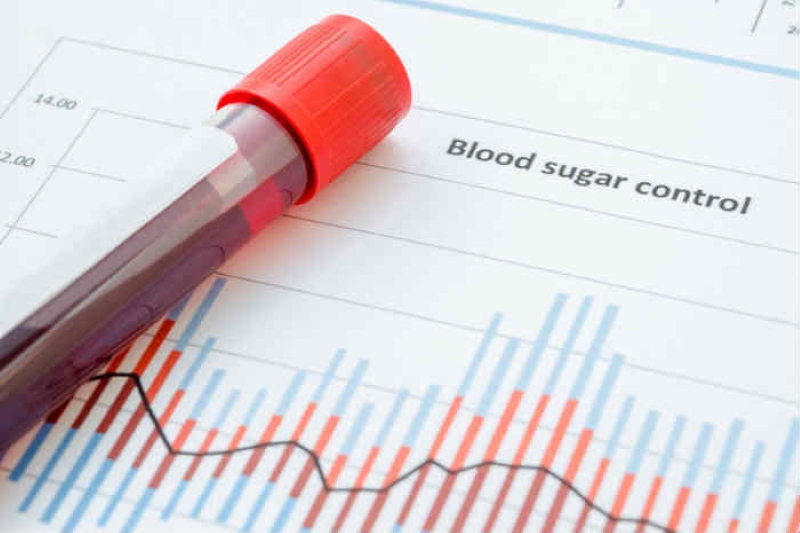
Blood glucose curve: what it is, when it is important and why this test is performed
The glycaemic curve (or rather oral glucose load curve, also known by its acronym OGTT) is a test used to diagnose diabetes mellitus
The test measures blood glucose values with a blood sample taken on an empty stomach and two hours after taking an oral glucose solution.
The blood glucose curve test is also used in pregnancy to screen for gestational diabetes, in which case three samples are taken (fasting, after one hour and two hours after taking the glucose solution).
What is the blood glucose curve?
The blood glucose curve makes it possible to detect changes in carbohydrate metabolism.
In particular, blood glucose values that are below 140 mg/dl after two hours are considered normal.
For values between 140 and 200 mg/dl the alteration is identified as ‘reduced carbohydrate tolerance’ (a pre-diabetes condition) and for values above 200 mg/dl the diagnosis of diabetes mellitus can be made.
For gestational diabetes, on the other hand, the parameters are different. Values below 92 mg/dl on an empty stomach, below 180 mg/dl at 1 hour and below 153 mg/dl at 2 hours indicate a normal condition.
Even a single value above these limits makes it possible to diagnose gestational diabetes, a condition that it is important to keep under control for the health of the mother and the unborn child.
Blood glucose curve, are there any rules for preparing for the test?
The test is performed early in the morning, on an empty stomach.
Which patients can have a blood glucose test?
Patients with an impaired fasting blood glucose value, i.e. fasting values above 100 mg/dl but below 126 mg/dl, may be asked to have a blood glucose curve performed.
The fasting blood glucose value considered normal is below 100 mg/dl.
Two fasting blood glucose values above 126 mg/dl, or a single value at any time of the day above 200 mg/dl, or a glycated haemoglobin value above 6.5 per cent already allow the diagnosis of diabetes mellitus.
Pregnant women with risk factors for the development of gestational diabetes may also take the test, on the advice of their gynaecologist.
Is the blood glucose curve test dangerous or painful?
The blood glucose curve test is a simple and non-invasive test.
The only discomfort may come from the very sweet taste of the glucose solution, which may induce nausea in more sensitive patients.
How is the blood glucose curve test performed?
An initial blood sample measures fasting blood glucose values.
The patient is then asked to drink a glucose solution consisting of water and 75 grams of sugar.
Once the solution has been taken, the blood sample is repeated after two hours.
In the case of gestational diabetes screening, a further blood sample is taken after one hour.
Read Also
Emergency Live Even More…Live: Download The New Free App Of Your Newspaper For IOS And Android
Glycated Haemoglobin: What It Is And Why It Is Important
Urine Tests: Glycosuria And Ketonuria Values
Colour Changes In The Urine: When To Consult A Doctor
Paediatric Urinary Calculus: What It Is, How To Treat It
High Leukocytes In The Urine: When To Worry?
The Colour Of Pee: What Does Urine Tell Us About Our Health?
Pee Colour: Causes, Diagnosis And When To Worry If Your Urine Is Dark
Haemoglobinuria: What Is The Significance Of The Presence Of Haemoglobin In Urine?
What Is Albumin And Why Is The Test Performed To Quantify Blood Albumin Values?
What Is Cholesterol And Why Is It Tested To Quantify The Level Of (Total) Cholesterol In The Blood?
Gestational Diabetes, What It Is And How To Deal With It
What Is Amylase And Why Is The Test Performed To Measure The Amount Of Amylase In The Blood?
Adverse Drug Reactions: What They Are And How To Manage Adverse Effects
Albumin Replacement In Patients With Severe Sepsis Or Septic Shock
Creatinine, Detection In Blood And Urine Indicates Kidney Function
Kidney Stones: What They Are, How To Treat Them
What Is Albumin And Why Is The Test Performed To Quantify Blood Albumin Values?
What Is Cholesterol And Why Is It Tested To Quantify The Level Of (Total) Cholesterol In The Blood?
Gestational Diabetes, What It Is And How To Deal With It
What Is Amylase And Why Is The Test Performed To Measure The Amount Of Amylase In The Blood?
Adverse Drug Reactions: What They Are And How To Manage Adverse Effects
Kidney Stones: How They Form And How To Avoid Them


